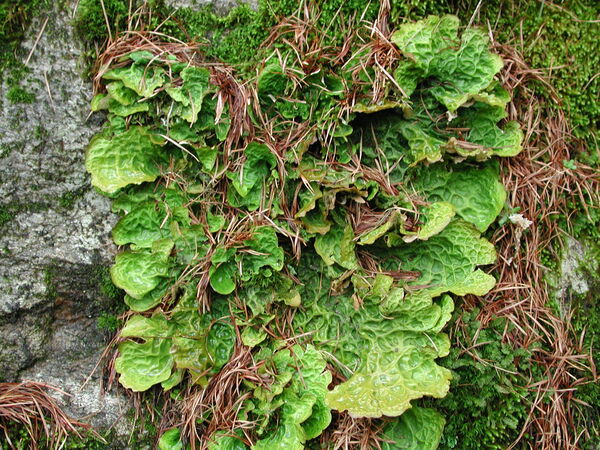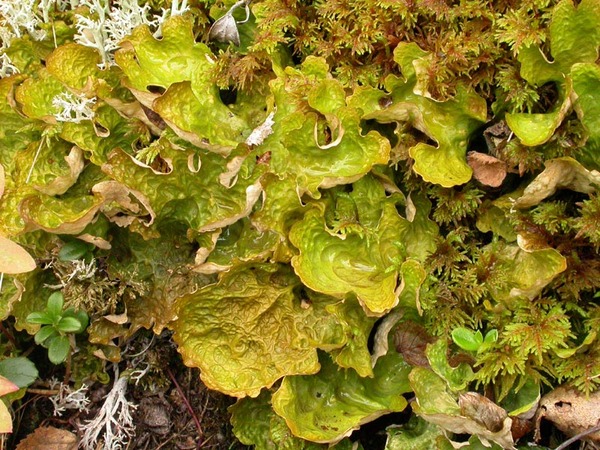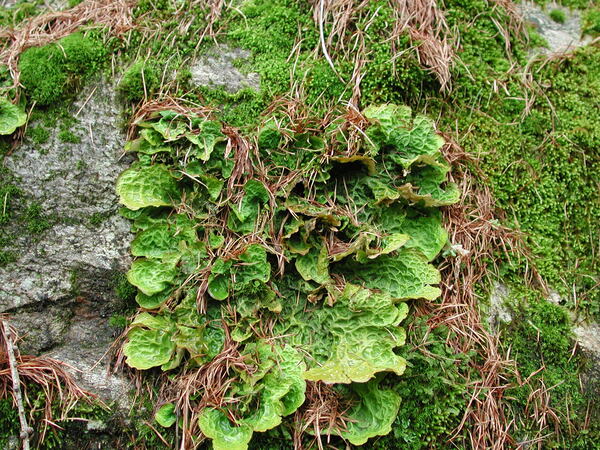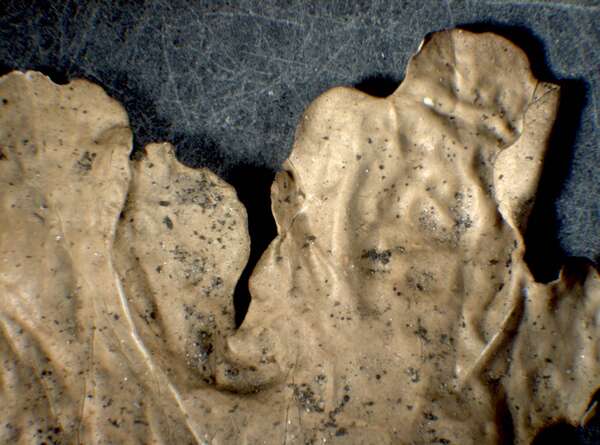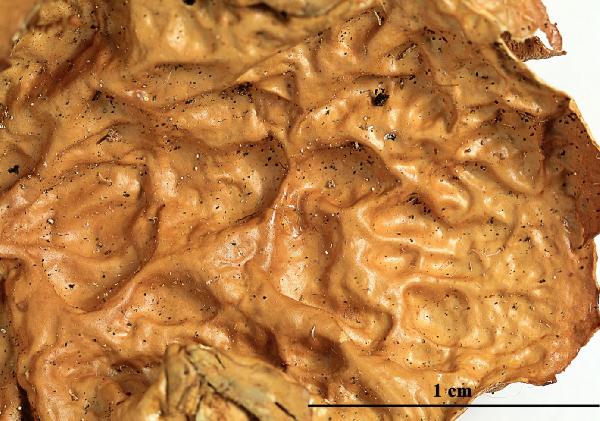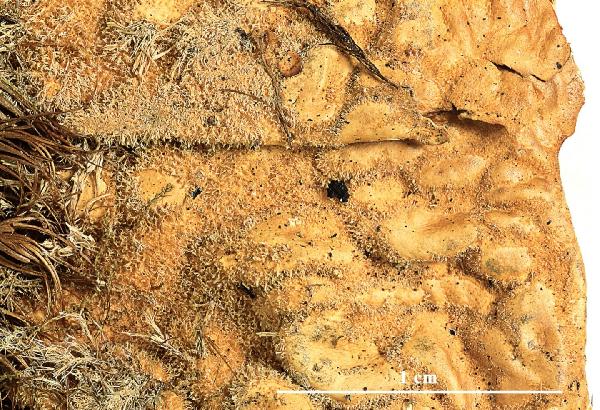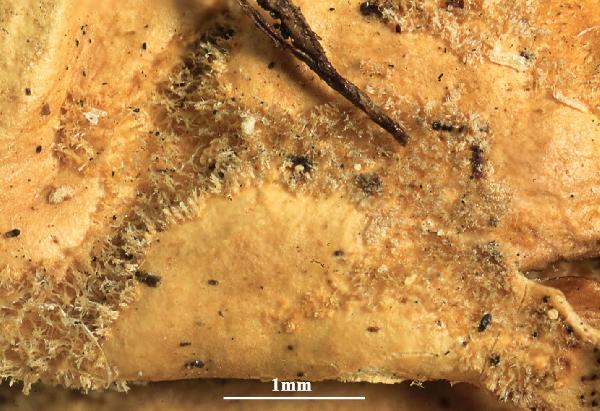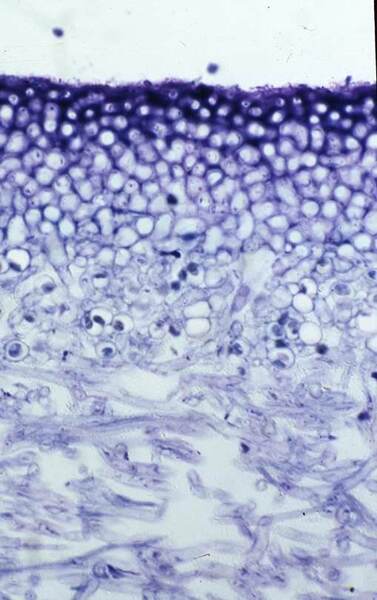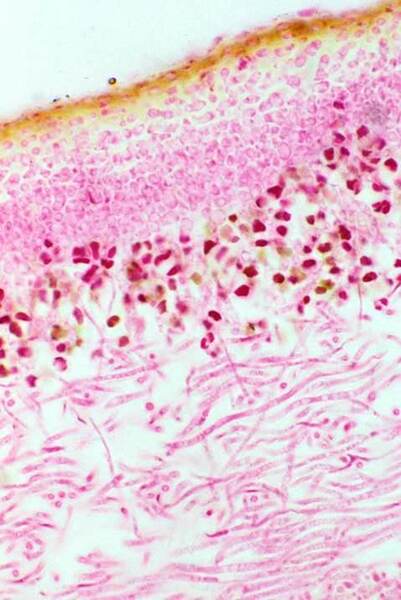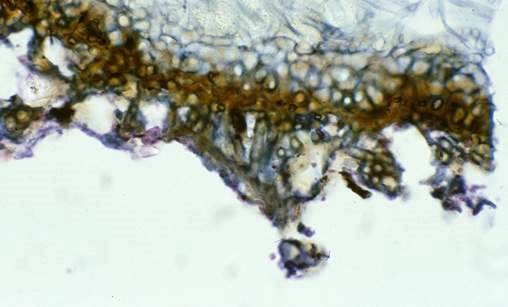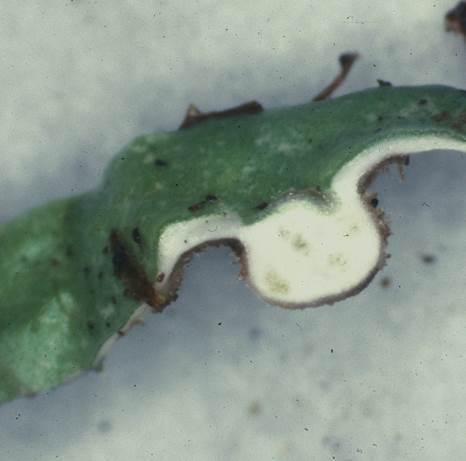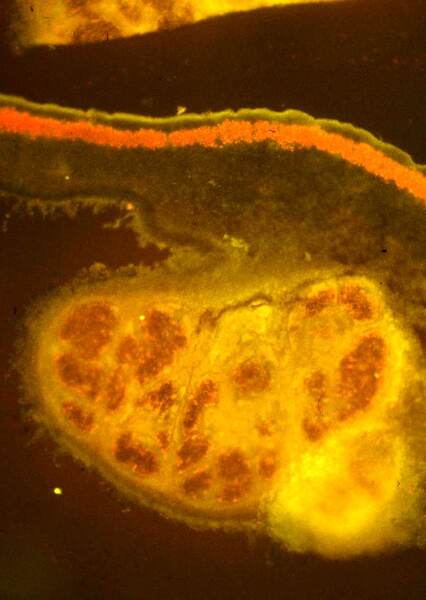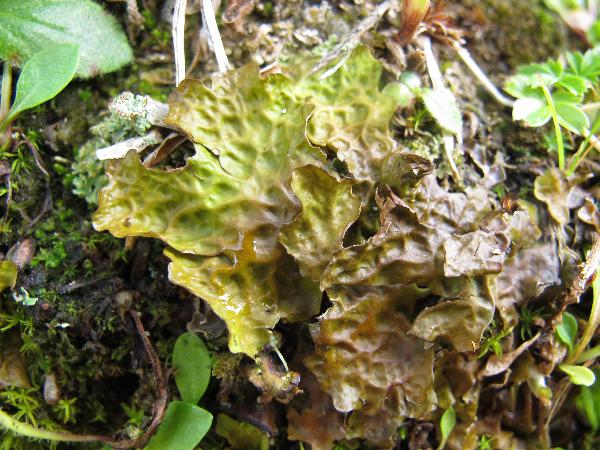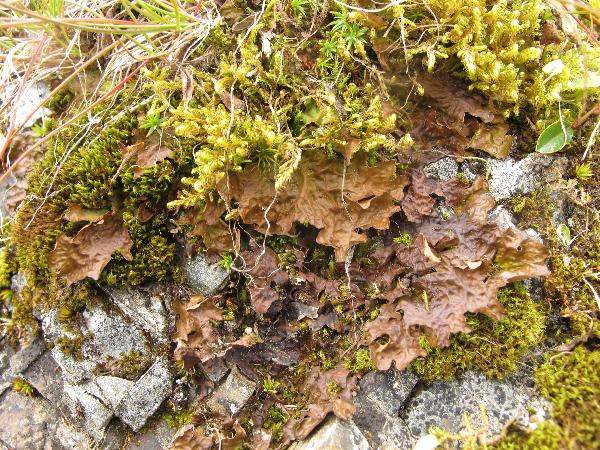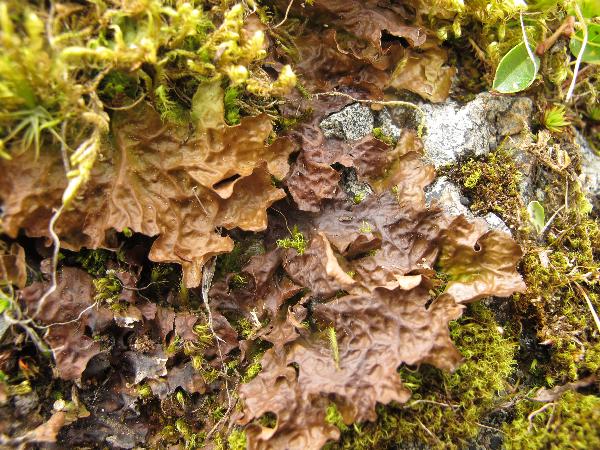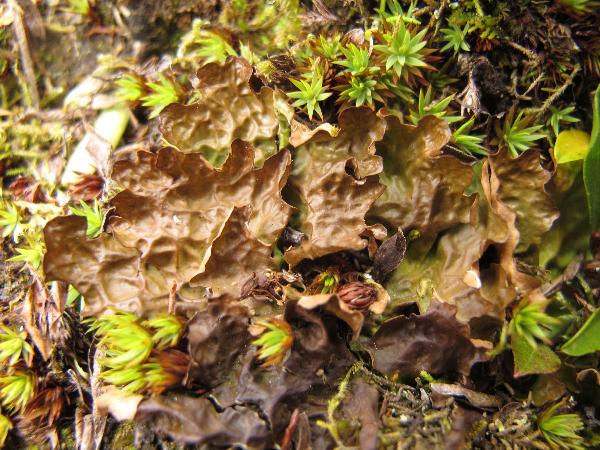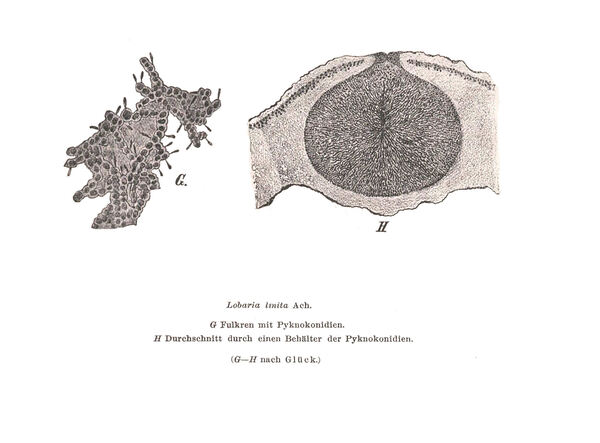Lobaria linita (Ach.) Rabenh.
Deutschl. Krypt.-Fl., 2: 65, 1845. Basionym: Sticta linita Ach. - Syn. Meth. Lich.: 234, 1814.
Synonyms: Lobaria garovaglii (Schaer.) Jatta; Sticta garovaglii Schaer.
Description: Thallus foliose, heteromerous, dorsiventral, broad-lobed, potentially to 10(-20) cm across, up to 0.3 mm thick, loosely attached, without soredia and isidia. Lobes broad and rounded and ascending at tips, rarely linear, 1-3(-4) cm wide, more or less dichotomously divided. Upper surface more or less glossy, grey-green to grey-brown, bright green when wet, more or less strongly reticulately ridged with shallow to marked depressions, lacking isidia and soredia. Lower surface white to pale brown at margins and on the swellings corresponding to the depressions on upper surface, otherwise brown-black, tomentose except on the swellings, erhizinate or with dark, up to 4 mm long, at first squarrose, then simple rhizines. Upper cortex pseudoparenchymatous, 30-50 µm thick, consisting of 5-6 layers of cells with c. 10 µm wide lumina; medulla white, often with internal cephalodia appearing on the surface as c. 2 mm broad swellings; lower cortex pseudoparenchymatous. Apothecia laminal or marginal, most frequent on ridges, up to 3.5(-4) mm across, with a brown-red disc and a warted thalline margin. Epithecium reddish brown; hymenium colourless or pale brown in lower part, 95-120 µm high; paraphyses mostly simple, 1.5-2.5 thick, not capitate; hypothecium brownish, 60-110 µm high. Asci (6-)8-spored, clavate, fissitunicate, the thickened apex with a K/I+ blue ring, Peltigera-type. Ascospores 1(-3)-septate, fusiform to narrowly ellipsoid, straight, hyaline, 21-34 x 6-9 µm. Pycnidia laminal and marginal, with 1-2 chambers. Conidia bacilliform, slightly swollen at one or both ends, 5-6 x 1-1.5 µm. Photobiont chlorococcoid (cyanobacterial in the cephalodia). Spot tests: , upper cortex K-, C-, KC-, P-, UV-; medulla K- or K+ faintly yellow, P-, UV-. Chemistry: tenuorin, 4-0-methylgyrophoric and gyrophoric acids, plus traces of other substances.
Growth form: Foliose, broad lobed
Substrata: soil, terricolous mosses, and plant debris
Photobiont: green algae other than Trentepohlia
Reproductive strategy: mainly sexual
Commonnes-rarity: (info)
Alpine belt: very rare
Subalpine belt: extremely rare
Montane belt: absent
Dry submediterranean belt: absent
Humid submediterranean belt: absent
Padanian area: absent
pH of the substrata:
1 2 3 4 5
Solar irradiation:
1 2 3 4 5
Aridity:
1 2 3 4 5
Eutrophication:
1 2 3 4 5
Poleotolerance:
0 1 2 3
Altitudinal distribution:
1 2 3 4 5 6
Rarity
absent
extremely rare
very rare
rare
rather rare
rather common
common
very common
extremely common
Loading data...
Occurrence data
Predictive map
Growth form: Foliose, broad lobed
Substrata: soil, terricolous mosses, and plant debris
Photobiont: green algae other than Trentepohlia
Reproductive strategy: mainly sexual
Commonnes-rarity: (info)
Alpine belt: very rare
Subalpine belt: extremely rare
Montane belt: absent
Dry submediterranean belt: absent
Humid submediterranean belt: absent
Padanian area: absent
pH of the substrata:
| 1 | 2 | 3 | 4 | 5 |
Solar irradiation:
| 1 | 2 | 3 | 4 | 5 |
Aridity:
| 1 | 2 | 3 | 4 | 5 |
Eutrophication:
| 1 | 2 | 3 | 4 | 5 |
Poleotolerance:
| 0 | 1 | 2 | 3 |
Altitudinal distribution:
| 1 | 2 | 3 | 4 | 5 | 6 |
Rarity
absent
extremely rare
very rare
rare
rather rare
rather common
common
very common
extremely common
Loading data...
Occurrence data
Predictive map


